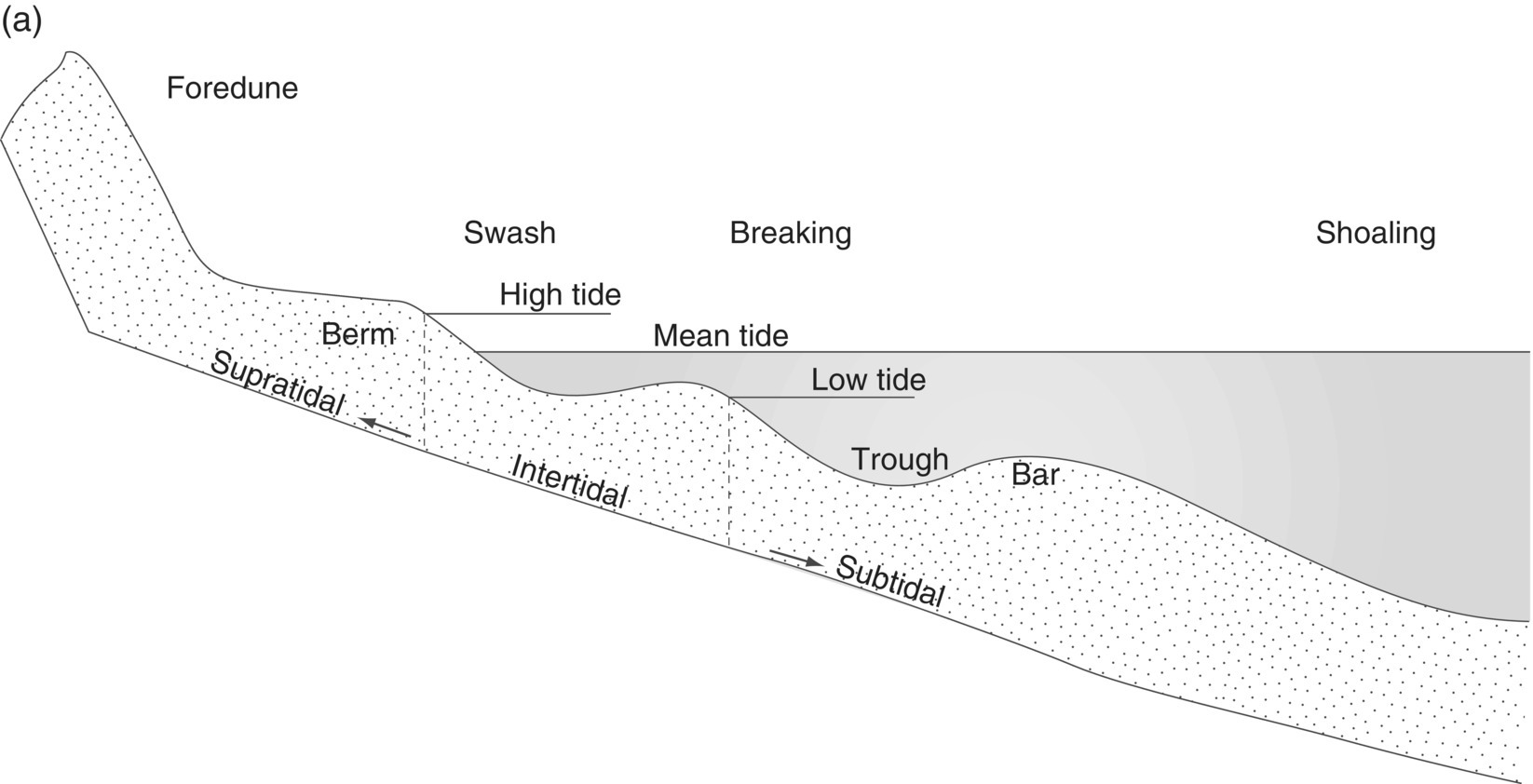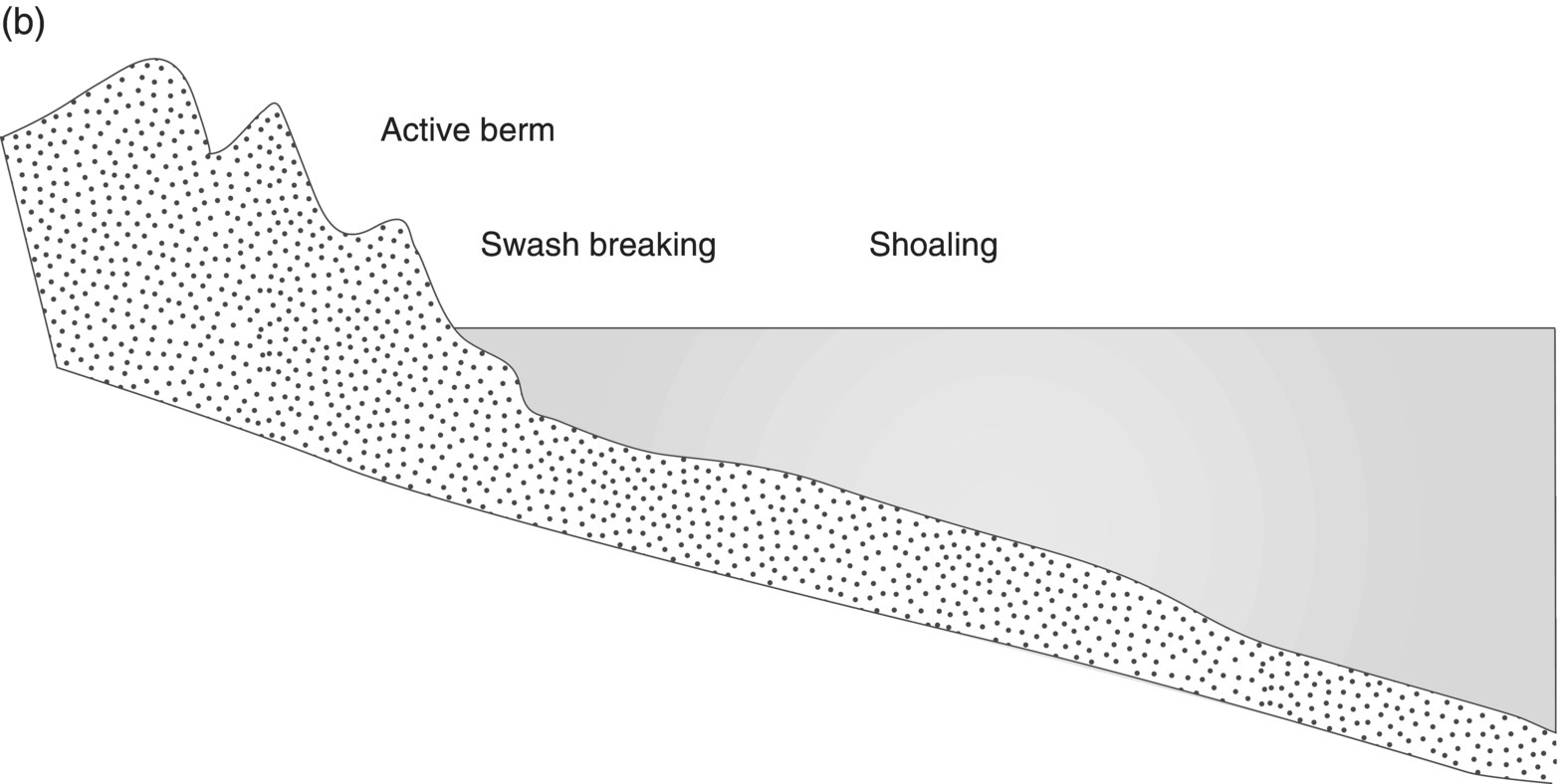7 Beaches
Gerben Ruessink1 and Roshanka Ranasinghe2
1Department of Physical Geography, Faculty of Geosciences, Institute for Marine and Atmospheric Research Utrecht, Utrecht University, Utrecht, The Netherlands 2Department of Water Science Engineering, UNESCO-IHE, Delft, The Netherlands
7.1 Introduction
7.1.1 Setting
Beaches can be defined as accumulations of sand or gravel found along marine, lacustrine and estuarine shorelines, and deposited by waves and wave-induced flows. Sandy beaches account for about 20% of the world’s coasts. Gravel beaches occupy approximately 10% of the global coastline and are found particularly in high-latitude areas. The beach constitutes the upper part of the shoreface (Fig. 7.1) and can be subdivided into three sub-systems:


Fig. 7.1 Typical cross-shore profile for: (a) a gently sloping sandy beach; and (b) a steep gravel beach, showing characteristic morphological features and hydrodynamical zones.
(Source: Adapted from Davidson-Arnott 2010. Reproduced with permission.)
- Subtidal zone: This zone extends from the low-water mark to typical water depths of 5–10 m. It is here that waves incident from deep water shoal and break. The breaking-wave zone is also called the surf zone, and in its outer part the breaking waves ...
Get Coastal Environments and Global Change now with the O’Reilly learning platform.
O’Reilly members experience books, live events, courses curated by job role, and more from O’Reilly and nearly 200 top publishers.

